Krancke, p13
RadarOfHistory.pdf
GEMA radar of wave length 0.5m suceeded in detecting a small warship at range of 12km in 1934 and 15km in the end of 1935 by pulsed ocillator. Admiral Graf Spee was equipped with FMG39G of 0.8m wave length, when WWII broke out on Sep 1939. While USS battleship Texus was equipped with 0.8m CXZ, and HMS Rodney with 7m 79Y.
Maru, p79 No694
| Wave length | 10cm |
| Power | 5 - 90kW |
| Pulse width | 1.5us |
| Horizontal beam | 5° |
| Vertical beam | 20° |
| Accuracy | 180m |
| Range | 45km |
| Antenna | Retangular parabola |
| Rotation | Manual |
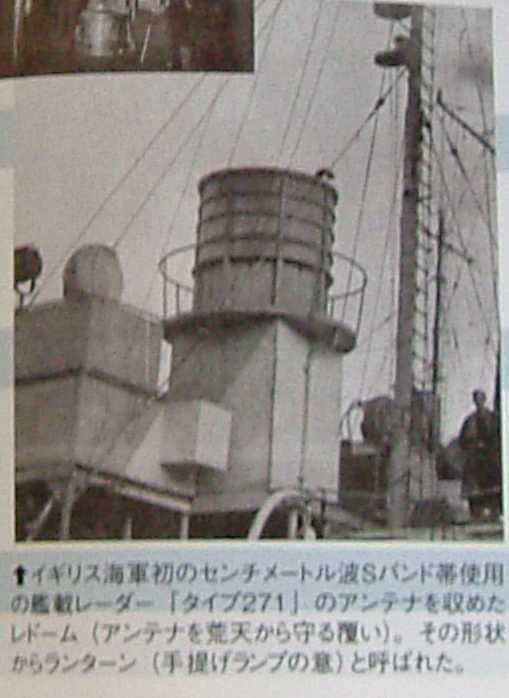 |
H.M.S. Suffolk sights and chases Bismarck
HMS battleship Prince of Wales's surface searching radar was not operational, when she and IJN flag ship heavy cruiser Chokai came near 50 nm each other at fog midnight.
UK shipbuilt a lot of small escort warships for ASW. Corvette of the Flower class were equipped with a microwave radar, Type 271. First fitted to corvette HMS Orchis in May 1941.
British Naval Radar Equipment of World War II
AI Mk 3 was 200MHz and 20us of pulse width. So the least detecting range was 330m. It was not operational. AI Mk 4 was 130m of the least range and operational in August 1940. 3,000 sets were producted till the end of 1942.
Gunzo, p24 No94
Kouku-ki tousai radar
Tokuda, p218
| Type | Wave length | Power |
| CXAM-1 | 1.5m | 15kW |
| SK | 1.5m | 200kW |
| SC-2 | 0.5m | 20kW |
| FC | 0.4m | 40kW |
| FD | 0.4m | 40kW |
| SP | 10cm | - |
| SG | 10cm | 50kW |
| SJ | 10cm | 50kW |
| FH | 10cm | 15-20kW |
| SD | - | 100kW |
 |  |
| SC radar | USS Lady Lex |
DenshiHeiki, p43-58
 |
Gunyo radar kaihatsu monogatari
Eibei ga micro ha radar wo kyodokaihatsu suru
Beikoku kansen tousai radar no kyusokuna shinpo
Radar(denpa tanshingi)
USA developed a microwave radar in a laboratory. The labo was called the Radiation Laboratory.
-
Half of the radar deployed during World War II was designed at the Rad Lab, including over 100 different radar systems (such as the SCR-584 radar), and $1.5 billion worth of radar.
USN developed varioust type radars.
Radar Development In America
SJ, SJa, SJ-1 SUBMARINE SURFACE SEARCH RADAR
Historic Naval Ships Association
The Oldest Working Radar (1943) - USS COBIA SJ-1 s/n 37
Radar
-
US aircraft carrier
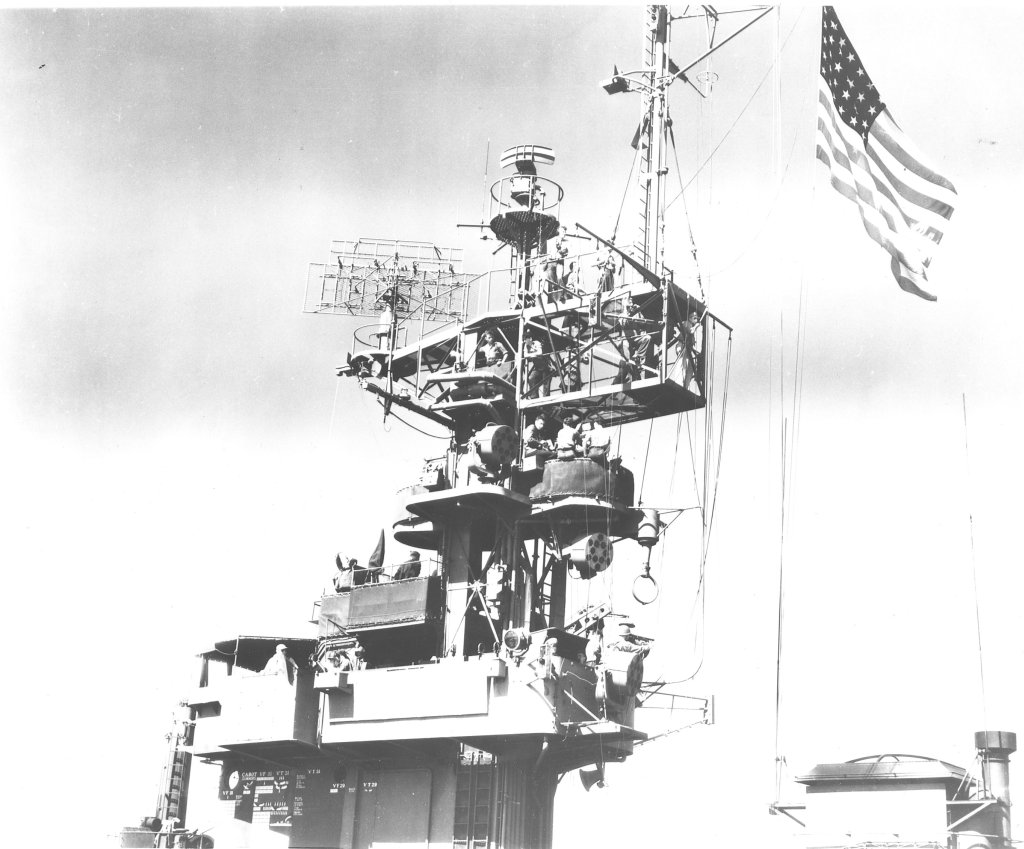 |  |
| USS Cabot (CVL-28) | USS California |
-
A view of the island of USS Cabot (CVL-28). USN photo via Floating Drydock. Judging from Air Group 29's (VF-29 & VT-29) scoreboard this picture was probably taken in October (or perhaps November) 1944.
The curved antenna of the surface search SG radar is seen on the raised circular platform. Forward of and below it is the SC-2 air search radar antenna. A second air search radar (SK) was installed on a stub mast between the pairs of uptakes — all fleet carriers were fitted with two air search sets as insurance against the failure of one of them in combat, and the wide separation of both main radars aboard CVL's often resulted in better radar performance than that enjoyed by the heavier and larger CV's. (c)David Buell
The photo shows the radar for 5"/38 guns and main guns of USS California
IJA finished a flying aircraft detection test using contineous wave officially in 1939. The detection system was called Denpa Keikaiki Ko. The systems were installed in China and Japan. As for early warning pulsed land radars, See land radar.
Tokuda p223
IJN established NRL in 1923 at the same time as well as USN did. Tani of Japanese NRL proposed a radar study in 1936. He judged it important from UK recent patent claims. But his boss refused of the notable comment after the Pacific War. Tani evaluated Yagi aerial array highly. Instead of him, Itoh took up his position. I do not know why Tani would continue the study. It seems that Itoh ignored Yagi's method, though Yagi recommended him to study in Germany. Tani and Itoh graduated University of Tokyo, while Yagi was not a professor of University of Tokyo, but Tohoku University and Tokyo Institute of Technology.
Nakagawa, p29
Gunzo, p94-101, No70
Nihon ga radar kaihatsu wo hajimeru
Differences of Technical Officers of Army and Navy
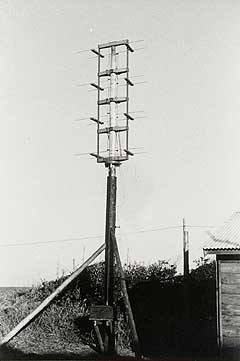 |
Kaigun radar tsurezuregusa
Denpa heiki
Electronics de kanpai sita Kaigun��Kaigun no seisaku shita dentan(radar)
The photo shows warning air radar Type 13 installed ground at Kisarazu in Chiba for experiment. However, The type 13 could not measure direction and altitude of targets. The Antenna was for short wave radio originally.
Warship Radar
- Aircraft Carrier
Syokaku was equipped with an AA radar for the first time among IJN carriers in July 1943. Its radar caught US aircraft at 6045 time far away 145km, and Syokaku controlled CAP in the battle of the Santa Cruz Islands.
Nakajima, p116While USN had already done CAP at the battle of Midway. The CAP was controlled in CIC of aircraft carriers.
- Battleship
A trial radar equipped old battleship Ise and Hyuga each just before the battle of Midway. Ise was equipped with Type 21. Hyuga was equipped with Type 103 which was prototype of Type 22. The size of the antenna of Type 103 was 1.5m diameter and 2m length. It was called maguro (tuna).Wave length Power Weight Type 21 1.5m 5kW 850kg Type 103 10cm 2kW - - Cruiser
An improved Type 22, which was called Type 22 kai1, equipped IJN heavy cruiser Atago. The radar detected enemy fleet well in the battle of Mariana in May 1943. So the 2nd Fleet could got off chasing US fleet, because the Type 22 kai1 adopted a kind of autodyne circuit invented by JRC (Shinnihonmusen). And replacing low sensivity Type 22 kai1, next Type22 kai2 adopted solid state diode. The kai2 was operational fully in October 1944 at last. It was too late. More than 100 set of kai2 were in stock in the end of the Pacific War. - Destroyer escort
A few warnign air radars were equipped with larger warships at first. So submarines, destroyer escorts and destroyers were late, they were busier with escort and patrol than large warships.

Type 22 Type 13 The photos show radars of Shisaka, Hiburi class destroyer escort that was taken on 16 September 1945 at Yokosuka after surrender. Type 22 was a surface searching radar. Type 13 was an air warning radar.
Sekai no kansen, No.507
Kaigun 3shiki 1go denpa tanshingi 3gata - Submarine
The photos shows surface searching radar of IJN and USN. The right photo shows Bridge of IJN submarine I-402. The right is Type 13 at the right of the bridge. The radar antenna of warning aircraft was for an airborne radar originally. The antenna was developed by IJN aircraft department. So warship department disagreed the equipment. A submarine captain persuaded Kure Arsenal to equip. The trial equippment happened to be a good result.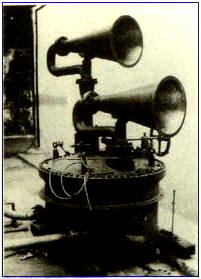

Type 22 Bridge of I-402 IJN submarine I-58 was equipped with a trial surface searching radar in February 1943. The radar could detect a floating submarine in the front at range 2,000m only. But air warning radar Type 13 of I-58 detected an enemy aircraft the next mission on 3 March 1945. I-58 could be afloat an hour and 10 minutes only during 2 days in April 1945 in the battle of Okinawa. Hashimoto Mochitsura (1909-2000), a captain of I-58 was not afraid of a sudden airborne attack in July 1945. The type 13 helped warning aircraft correct. Type 22 did not detect an enemy, when I-58 suceeded to sink USS heavy cruiser Indianapolis on 27 July 1945. Nor did a radar of Indianapolis. He worked at a submarine maker of previous Kawasaki Heavy Industries, Kawasaki zousen now after the Pacific War.
Hashimoto p.219, 285, 319, 384
I do not know the fact that Japanese airborne intercept radars could be effective in combats, though airborne searching radars were useful in some cases. Some IJN Myrt and IJA Nick were equipped with airborne radars. They warned flying enemy aircarft in the south of Shikoku and Honshu before air combats.
IJN and IJA developed independent airborne radars as the same as aircraft guns. Why couldn't IJN and IJA cooprate to develope radars one another? The specifications are as follows,
| Purpose | Type | Wave length | Weight | Range | Production QTY | Date | User | Note |
| Search | H-6 | 2m | 110kg | 70km (aircraft) 20-30km (submarine) | 300 | Apr1943-Mar1944 | IJN | operational |
| Search | Taki-1 | 1.5m | 150kg | 20km (submarine) | - | Mar1943- | IJA | |
| Intercept | FD-2 | 0.6m | 70kg | 0.5-3km (aircraft) | 100 | Aug1944- | IJN 302nd kokutai | of no use |
| Intercept | Taki-2 | 0.8m | 120kg | 0.5-3km (aircraft) | - | Jan1945- | IJA 53rd sentai | applied for 2 aircraft, of no use |
IJN made a trial of PPI airborne radar in the end of the war. The radar was called Type 51. Takayanagi of NHK Laboratory proposed at first. Getting 3cm PPI radar equipped with a shotdown B-29, IJN tried wavelength 10cm PPI radar. The trial of the radar tested well on a flying Betty at Misawa Base on 8 August 1945.
However, more than 20,000 US aircraft had been already equipped with 60cm surface searching radar on USN bombers and torpedo bombers by 1943.
Giken p196, p288, p254
Watanabe, p392-393
PPI Hyoji
| Date | Time | Weather | Action | Type | Warship |
| 1941Mar27 | 0500-1040 | fog and snow | Detection of watch cruiser | DT | Admiral Sheer |
| 1943Jul20 | 0000-1400 | fog | Warning entrance of Kiska Bay | Type22 | Shimakaze |
| 1944Nov28 | 2030-0305 | cloudy, wind scale 4 | Track of Shinano | SJ | Archerfish |
| 1945May16 | 0210 | calm, clear | Search and bearing | 293 PPI | Venus |
USS Archerfish
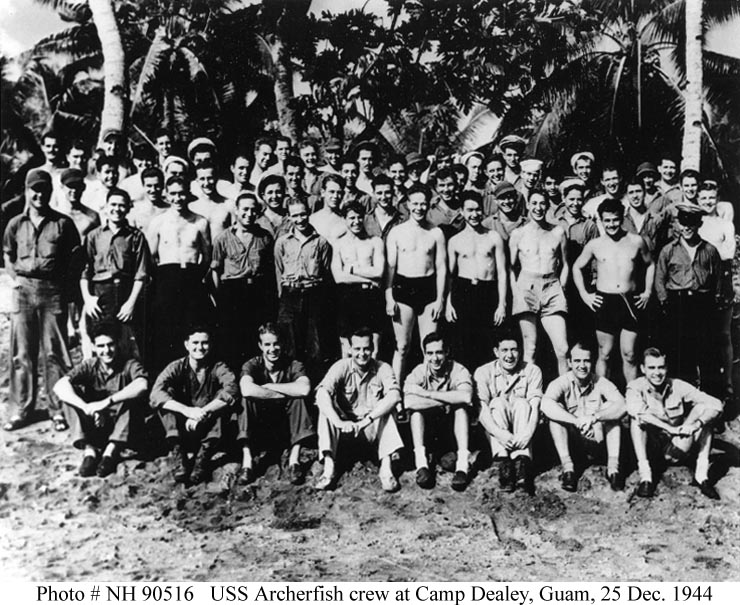 | 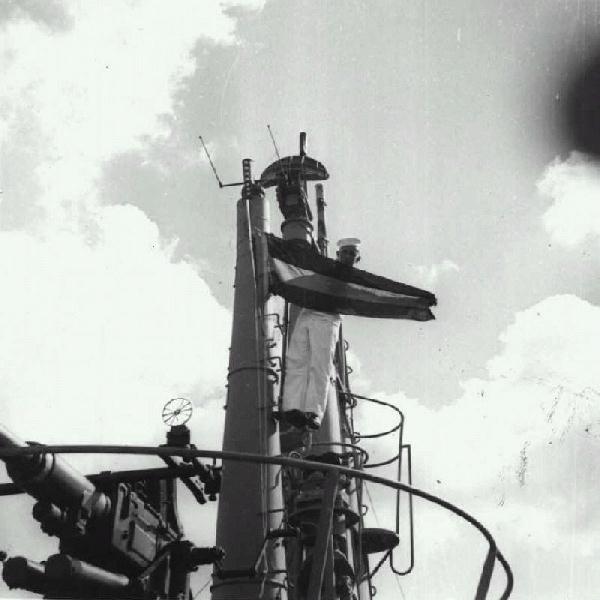 |
| Crews of Archerfish | SJ & SD radar |
Enright Shinano!
IJN Destroyer Shimakaze
 |  |
| IJN Destroyer Shimakaze | Kimura |
Kriegsmarine Admiral Graf Scheer
 |  |
| Kriegsmarine Admiral Graf Scheer | HMS Norfolk |
HMS Destroyer Venus
 |  |
| HMS Venus | IJN Heavy cruiser Haguro |
Andaman heno yusosakusen
The Sinking of the Haguro
Western scientists studied light since Newton for a long time. I think scientific experimental discovery and love were important to stimulate studies for radars. F. W. Herchel found heat effect of infra red in 1800. A. Ampére showed this was electro magnetice wave in 1835. G. Kirchhoff found law of radiation in 1859 and thought concept of black body. Stefan-Boltzmann's radiation law in 1884. Wien's law in 1893. M. Planck integrated L. Rayleigh and J. H. Jeans' law in long wave length and Stefan-Boltzmann's law in short wave in 1896.
I suppose that few scientists studied devices based radiation principle of electron and very few scientists studied propagation in wireless communication. Only NHK laboratory and a few colleges in technology studied it. While US government decided to spend a lot of money in the field of radiation science, though Japan spent much wartime money on China at that time.
Takashima, p15-21
[1] Tokuda, p228
[2] NHK1, p160-163
[3] Okinawa, p118
[4] Okinawa, p124
[5] Okinawa, p56

aboutMe
© 2008-2011 Enoki Flying Board All Rights Reserved